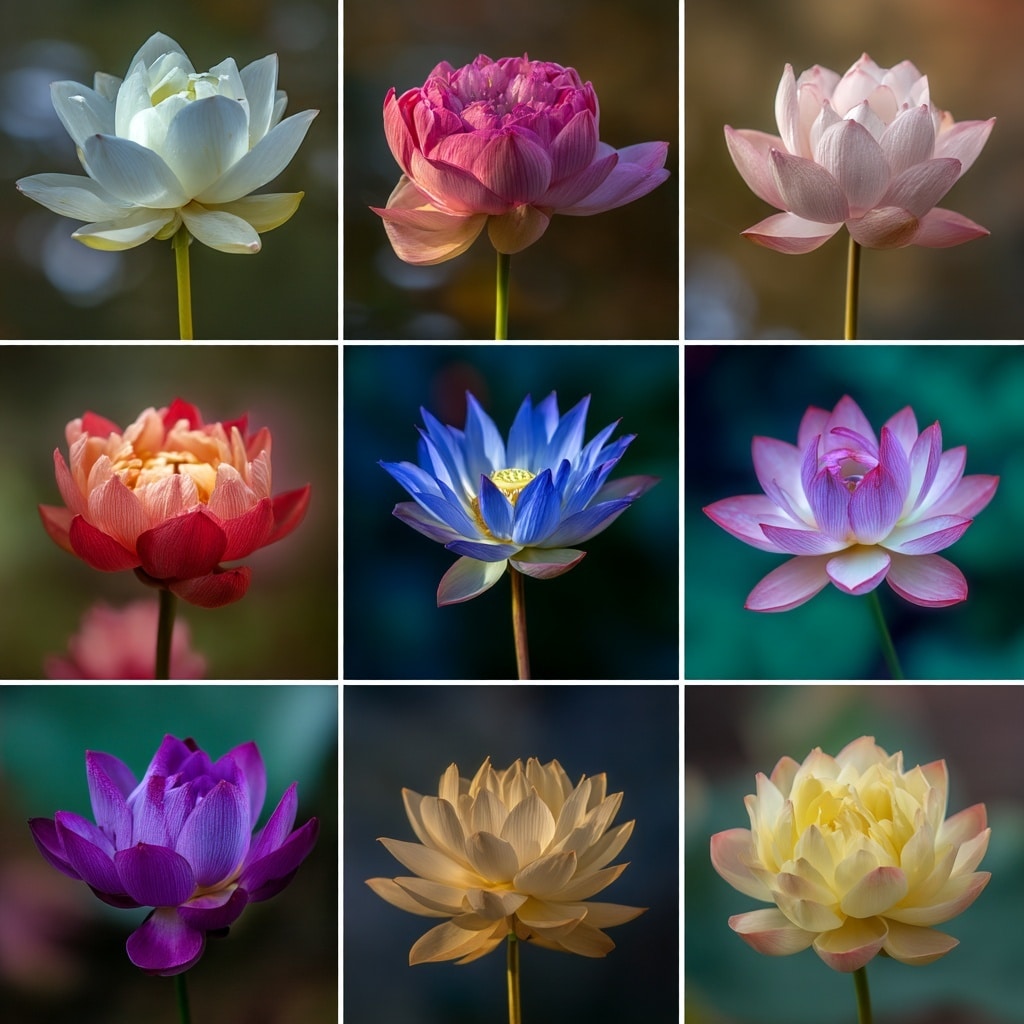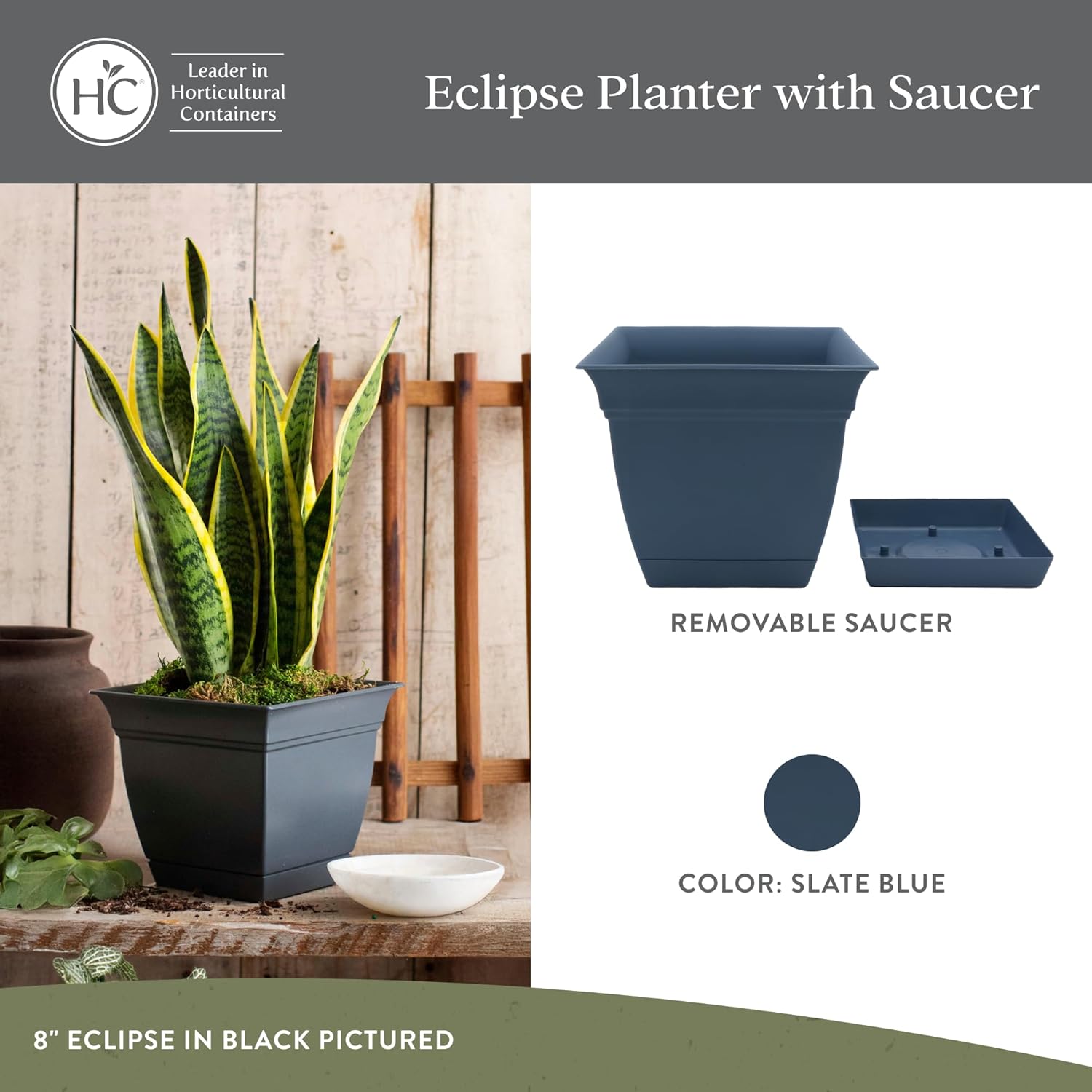Lotus flower meaning and symbolism run deeper than their delicate petals suggest. Often seen blooming gracefully above still waters, the lotus flower has long been a sacred emblem in cultures across the world. Revered in religion, myth, and spiritual practice, this aquatic plant stands for rebirth, purity, and spiritual awakening. Its colors each tell a unique story—whether representing enlightenment, divine love, or emotional growth. From ancient rituals to modern tattoos, the lotus flower continues to hold timeless significance. In this article, we’ll explore the meanings behind each color, its spiritual role, cultural history, and everyday uses that make the lotus more than just a beautiful bloom.
Table of Contents
History of the Lotus Plant
The lotus flower has a history as rich and layered as its petals. Often mistaken for water lilies, true lotus plants belong to the genus Nelumbo, particularly Nelumbo nucifera—also known as the Sacred Lotus. This plant has existed for thousands of years, with fossil evidence suggesting it dates back to the Ice Age.
Native to Asia, Australia, and parts of East Africa, the lotus has deep roots in both nature and mythology. Ancient civilizations in India, China, and Egypt not only cultivated the plant but also revered it as a sacred symbol. Over time, the lotus flower has come to represent spiritual awakening and purity across cultures and belief systems.
Interestingly, the name “lotus” has been applied to unrelated plants across different regions, leading to some confusion. Despite that, the true lotus—rising above murky waters with elegance—continues to be recognized worldwide for its spiritual depth and visual beauty.
Symbolism of Lotus Flowers

The lotus flower holds profound symbolism rooted in spirituality, nature, and human transformation. Known as a sacred bloom in Eastern traditions, it’s often seen as a symbol of purity rising from impurity. Growing in muddy waters, the lotus remains untouched by the dirt around it—making it a timeless metaphor for spiritual elevation, inner strength, and rebirth.
In many cultures, the lotus mirrors the journey of the soul. Its petals open with the sun and close at dusk, aligning it with cycles of renewal and awakening. In Buddhist and Hindu teachings, the flower represents enlightenment and the unfolding of consciousness. It’s often depicted as the throne of deities, symbolizing divine truth and spiritual progress.
Additionally, the lotus flower is associated with resilience, fertility, and innocence. Its emergence from dark waters without blemish signifies overcoming obstacles with grace. As a spiritual emblem, it continues to inspire personal growth, healing, and the pursuit of higher awareness.
Lotus Flower Meaning by Color
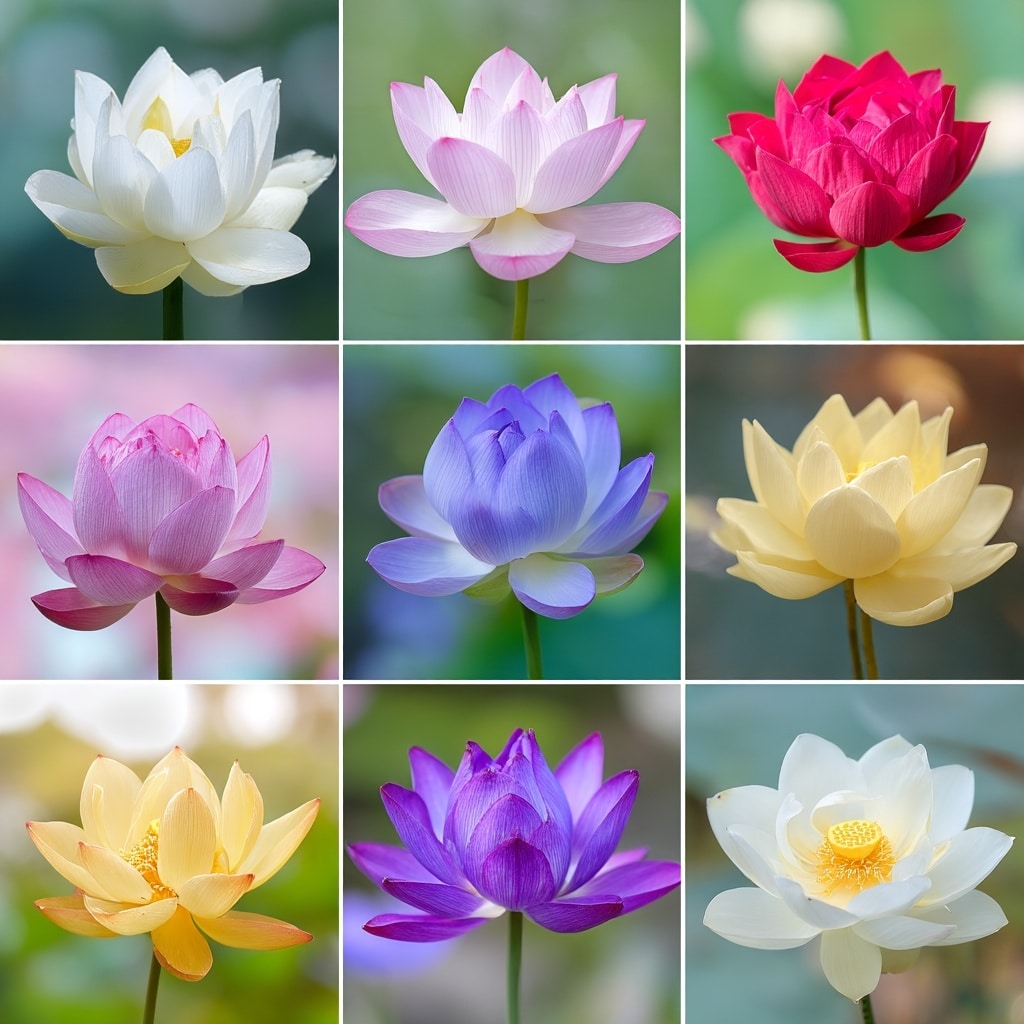
Each lotus flower color carries its own spiritual message, deepening the symbolism associated with this sacred plant. From purity to enlightenment, love to divinity, the shades of the lotus reflect different stages of personal and spiritual growth.
White Lotus Flower Meaning
The white lotus flower is a symbol of spiritual purity and mental clarity. Often associated with the crown chakra in Eastern practices, it represents a clean, awakened mind free from material distractions. This color also suggests innocence and a return to spiritual truth.
Pink Lotus Flower Symbolism
Pink lotus flowers are considered the most traditional in Buddhist iconography. They stand for grace, devotion, and divine feminine energy. A fully bloomed pink lotus can represent complete spiritual enlightenment, while a bud symbolizes the beginning of the path.
Purple Lotus Flower Meaning
The purple lotus flower speaks of mysticism and inner awakening. It is linked to personal transformation, spiritual insight, and self-mastery. In some traditions, it represents the eightfold path of spiritual enlightenment.
Red Lotus Flower Meaning
Red lotus flowers symbolize love, compassion, and emotional depth. They’re often linked to the heart and signify a connection to passion and devotion—not only romantic, but also spiritual and unconditional.
Blue Lotus Flower Meaning
A blue lotus flower stands for wisdom, intellect, and the journey toward spiritual truth. Unlike other colors, it is typically depicted only partially open, symbolizing that learning is a never-ending process.
Yellow Lotus Flower Meaning
The yellow lotus is associated with higher knowledge and detachment from worldly concerns. It reflects the energy of optimism, clarity, and spiritual ascension beyond materialism.
Cultural Significance of Lotus Flowers
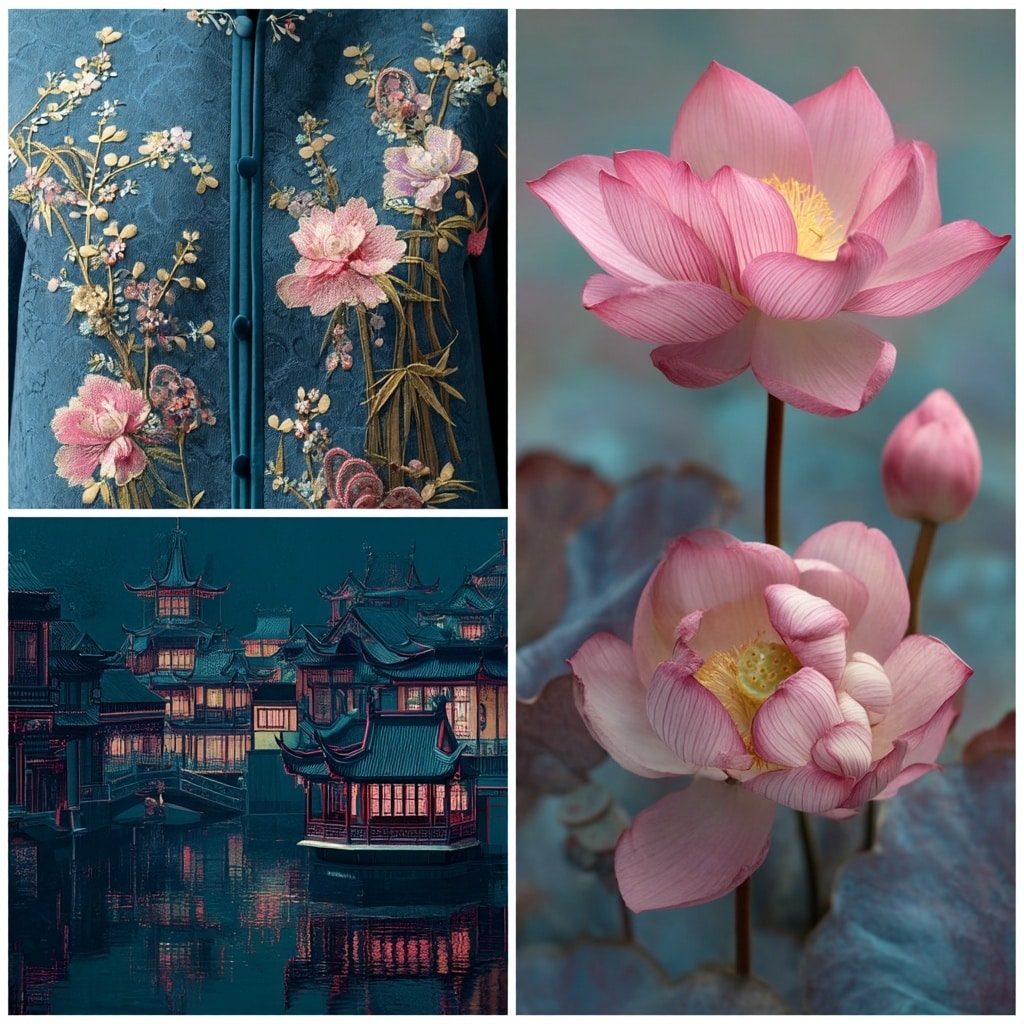
Across many ancient and modern civilizations, the lotus flower holds a sacred place—not just for its beauty, but for the rich meanings it carries in art, religion, and tradition. In Asia especially, the lotus is deeply embedded in daily life and spiritual practice.
In India, the lotus is the national flower and a symbol of purity, fertility, and divine birth. Deities like Lakshmi and Saraswati are often depicted seated on blooming lotuses, signifying wisdom and prosperity. The flower is also central to Ayurvedic rituals, where petals are used in ceremonial water and spiritual healing.
In Chinese culture, the lotus represents summer, abundance, and moral integrity. It is a common motif in traditional paintings, clothing embroidery, and architecture. Its ability to bloom unstained from the mud makes it a metaphor for living a virtuous life.
In Japan, the lotus is linked to the Buddhist journey from suffering to enlightenment. Shrines and gardens often feature lotus ponds to symbolize spiritual reflection and inner peace.
Through all these traditions, the lotus flower remains a universal icon of transformation, resilience, and sacred beauty.
Biblical Meaning of Lotus Flowers
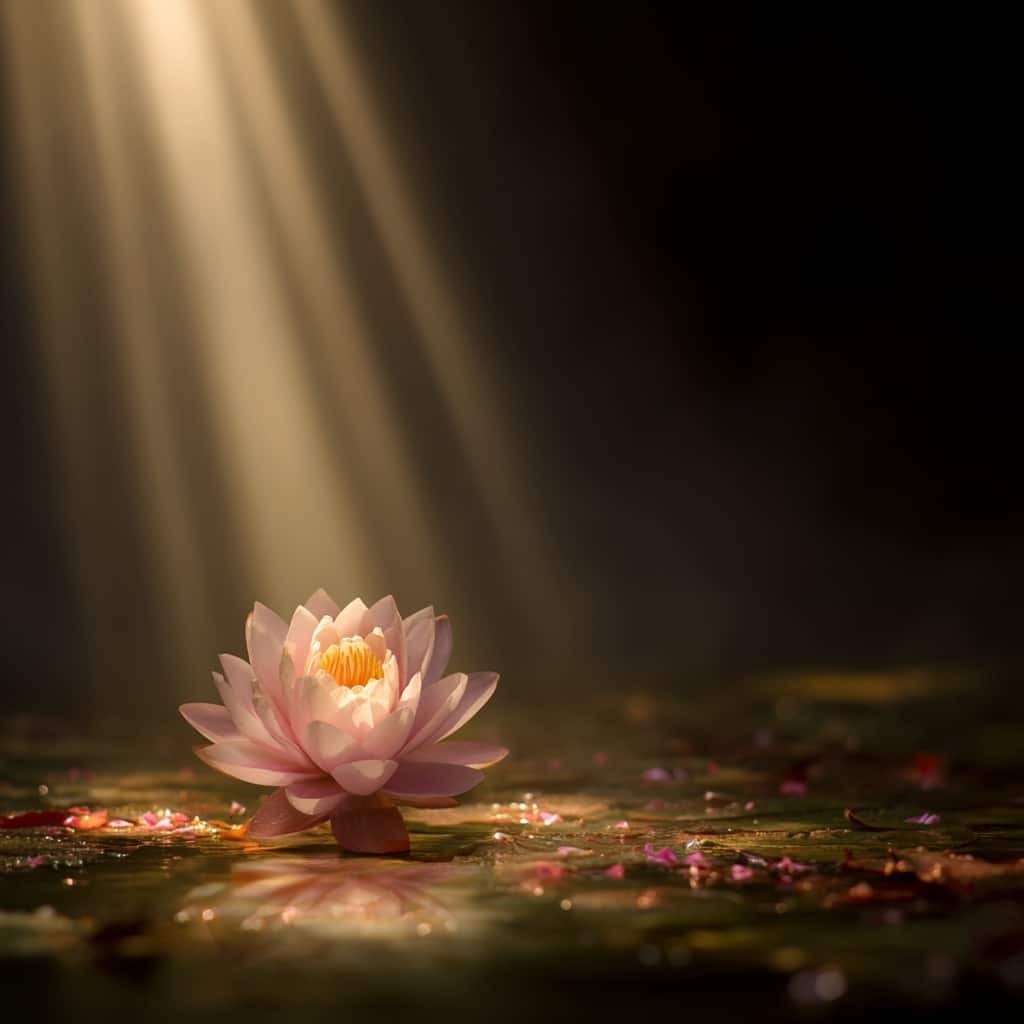
While the lotus flower is not commonly mentioned by name in the Bible, its symbolism resonates with themes found in Christian teachings. The flower’s association with purity, resurrection, and divine creation mirrors key biblical ideas about spiritual rebirth and the soul’s journey toward God.
Some interpretations connect the lotus with water lilies, which do appear in ancient religious texts. In Christian iconography, the Archangel Gabriel is sometimes depicted offering water lilies during the Annunciation, symbolizing divine grace and the birth of new life—ideas that closely parallel the lotus flower’s meanings in other spiritual traditions.
Beyond Christian texts, the lotus is deeply honored in Buddhism and Hinduism, where it represents spiritual awakening, the soul’s evolution, and detachment from worldly suffering. These spiritual parallels make the lotus a meaningful symbol even within interfaith perspectives, highlighting its universal message of rising above darkness into light.
In a biblical or spiritual sense, the lotus flower can be understood as a living symbol of purity of heart, divine presence, and the power of resurrection.
Spiritual Meaning of Lotus Flowers

The lotus flower is one of the most powerful spiritual symbols in the world. Revered across faiths and philosophies, it represents the journey of the soul from darkness to light, from ignorance to wisdom. Just as the lotus rises from murky water to bloom in pristine beauty, it mirrors our ability to transcend life’s challenges and reach higher states of awareness.
In Hinduism, the lotus is linked to creation, prosperity, and divine feminine energy. It’s also associated with the crown chakra, which governs spiritual connection and enlightenment. Deities like Vishnu, Lakshmi, and Saraswati are often shown seated on lotuses, symbolizing their purity and cosmic wisdom.
In Buddhism, the lotus embodies the Eightfold Path and the process of spiritual growth. A blooming lotus is seen as a soul that has achieved enlightenment, while a bud represents the potential for awakening.
Spiritually, the lotus flower encourages us to rise above emotional hardship, cultivate inner peace, and embrace humility, grace, and deeper self-understanding. It’s also said to support emotional healing, release anxiety, and promote a calm, centered energy.
Folktales and Myths About the Lotus Flower

The lotus flower appears in numerous folktales and myths, often symbolizing the mysteries of life, rebirth, and cosmic beginnings. Its emergence from murky waters has inspired stories across ancient civilizations, each interpreting its appearance as a sign of divine intervention or celestial beauty.
In Ancient Egyptian mythology, the god Horus is said to have risen from a blooming lotus, symbolizing resurrection and eternal youth. Some texts even describe the sun itself as being born from a lotus floating on the primordial waters—making the flower a powerful symbol of life’s origin and spiritual illumination.
In Indian legend, one tale tells of a lotus not as the mother of the sun but as a fallen star. When the star splashed into a pond, it transformed into a glowing lotus flower—connecting the cosmos with the earth.
These mythical stories align with the symbolic journey of the lotus flower itself: emerging from darkness into light, from confusion into clarity. Whether seen as a divine birth or a fallen star reborn, the lotus continues to captivate the human imagination with its timeless magic.
Lotus Flower Tattoos and Their Meanings

Choosing a lotus flower tattoo often reflects a deeply personal journey. More than just a beautiful design, this tattoo symbolizes spiritual growth, emotional resilience, and the ability to rise above adversity. Just like the lotus blooms from murky water into the light, many people choose it to represent their own path to healing and self-discovery.
In Indian tradition, a lotus tattoo may signify a person who has overcome temptation or hardship and emerged spiritually stronger. It’s a mark of transformation, showing how pain and struggle can lead to clarity and peace.
Each lotus flower color also holds unique significance in tattoo symbolism:
- White: purity and spiritual awakening
- Pink: divine love or Buddhist enlightenment
- Red: emotional strength and passion
- Blue: wisdom and inner truth
- Purple: mysticism and deep spiritual insight
Whether placed on the wrist, back, or chest, a lotus tattoo is more than a decoration—it’s a message to the world and a reminder to the self: your story is sacred, and your growth is beautiful.
Uses of Lotus Plants

Beyond symbolism, the lotus flower has many practical and cultural uses that span food, medicine, and decoration. Every part of the plant—from root to petal—offers value in traditional and modern life.
In ornamental gardening, lotus flowers are a popular centerpiece for ponds, water gardens, and spiritual spaces. Their ability to bloom cleanly above muddy water makes them a favorite for serene, reflective landscapes.
In Asian cuisines, lotus roots are sliced and stir-fried or added to soups for their crisp texture and mild flavor. The seeds, also called “lotus nuts,” are eaten raw, roasted, or ground into paste for desserts. Lotus leaves are used to wrap rice or meats, enhancing aroma and taste.
Medicinally, traditional practices in China and India use lotus parts to promote wellness. The roots support heart, liver, and digestive health, while flowers and seeds are said to ease anxiety and boost spiritual calm. In Ayurveda, lotus petals are added to healing waters or teas for their cooling, soothing effect.
Even today, the lotus flower continues to be used in ceremonies, offerings, and sacred rituals across Southeast Asia—blending beauty, meaning, and utility in one extraordinary plant.
Conclusion
The lotus flower is more than a beautiful bloom—it’s a timeless symbol of purity, rebirth, and spiritual evolution. Across cultures, its ability to rise above muddy waters has inspired stories, rituals, and practices that celebrate the strength of the soul. Whether admired in a pond, inked into the skin, or used in healing ceremonies, the lotus continues to remind us of the light that can emerge from life’s darkest depths.
Understanding the meanings behind its colors and the many ways it’s used brings us closer to the essence of this sacred flower—and perhaps even to our own growth and awakening.


